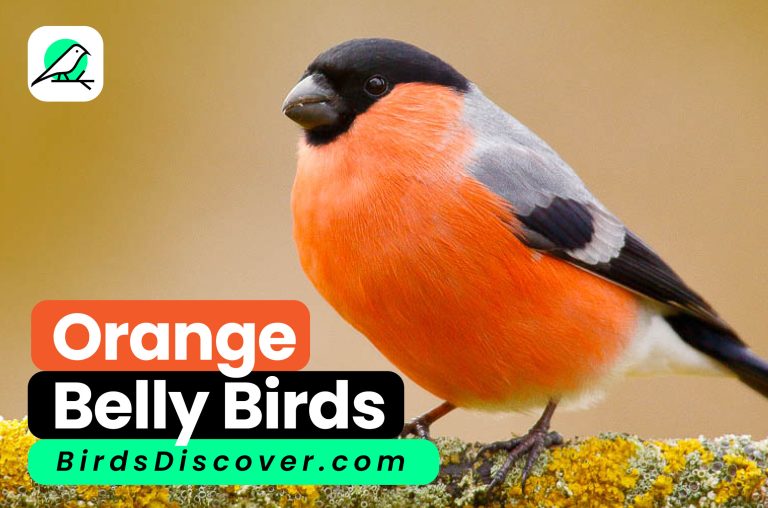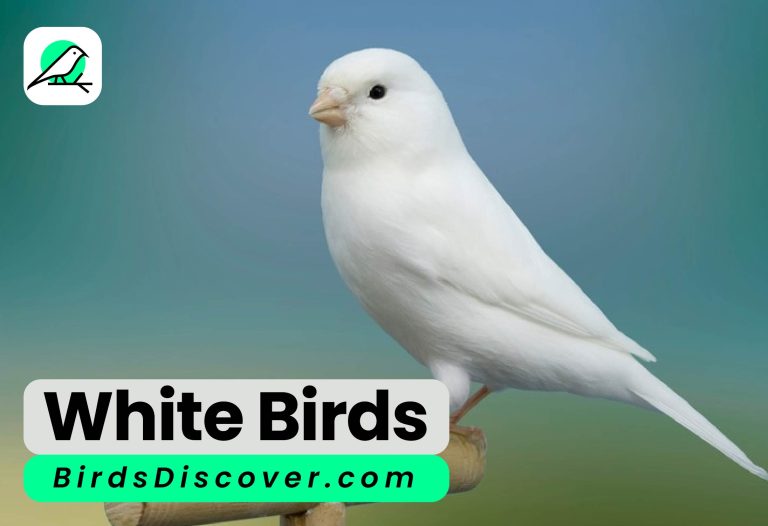10 Owls of Wisconsin
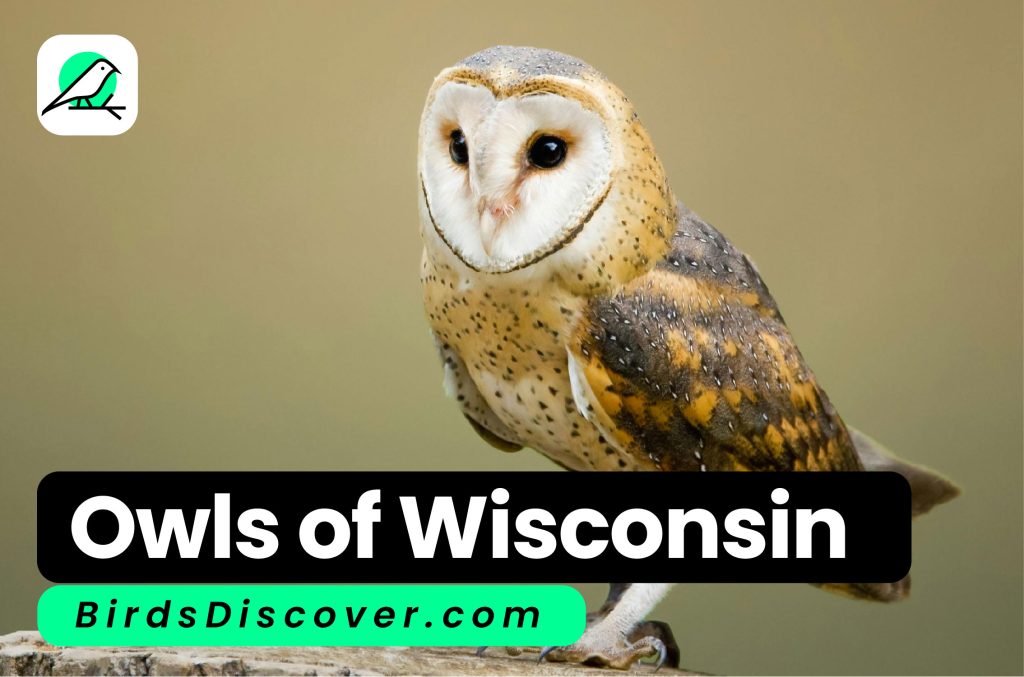
Introduction
Welcome to Owls of Wisconsin, your guide to the fascinating world of these nocturnal predators. Join us as we explore the diverse species of owls that call Wisconsin home, uncovering their behaviors, habitats, and unique adaptations. From the iconic Great Horned Owl to the elusive Barred Owl, discover the secrets of these majestic birds of prey as we delve into their captivating lives in the Badger State.
These amazing birds are loved by bird enthusiasts and nature lovers alike. With their mysterious charm and nocturnal habits, owls hold a special place in our hearts. In Wisconsin, you can find 10 different owl species.
1.Great Horned Owl

Great Horned Owl is known for its stealth, adaptability, powerful hunting, and wide distribution.
Great Horned Owls are found throughout North and South America, inhabiting diverse habitats.
Size 18 to 25 inches in height with a 3.3 to 4.8 feet wingspan.
Great Horned Owl, a majestic symbol of strength and wisdom in the night skies. With its piercing yellow eyes and distinctive “horns,” this formidable predator reigns over diverse habitats across the Americas. From dense forests to urban parks, it preys on creatures as large as skunks and as small as mice, showcasing its versatility as a hunter. Join us as we delve into the world of the Great Horned Owl, unraveling its secrets of survival and marveling at its silent flight in the moonlight
Biography of Great Horned Owl
| Aspect | Information |
|---|---|
| Species Name | Great Horned Owl |
| Scientific Name | Bubo virginianus |
| Country | North and South America |
| Number of Eggs | 1 to 4 eggs |
| Incubation Period for Eggs | Approximately 30 days |
| Diet | Carnivorous, small mammals, birds, reptiles |
| Habitat | Varied, forests, grasslands, urban areas |
| Migration (yes or no) | No |
| Body Size | 18 to 25 inches (46 to 63 cm) |
| Body Weight | 2 to 5.5 pounds (0.9 to 2.5 kg) |
| Dangerous for Humans | Generally not dangerous, but can be defensive if provoked |
| Maximum Flight Height | Up to 10,000 feet (3,048 meters) |
| Weather | Nocturnal, active in various weather conditions |
| Birds (yes or no) | Yes |
| Total Types | Several subspecies |
| Total Color | Varied shades of brown, gray, and white |
2.Barred Owl

Barred Owls known for distinctive hooting, woodland habitat, nocturnal hunting, and territorial behavior.
Barred Owls are found in forests, woodlands, swamps, marshes, and sometimes urban areas.
Size 16 to 25 inches (40 to 63 cm) in length
Barred Owl, a charismatic woodland dweller with soulful eyes and a hooting call. With its distinctive barred plumage and nocturnal habits, this owl is a symbol of mystery in North American forests. From its haunting vocalizations to its stealthy hunting of small mammals, the Barred Owl embodies the magic of the night. Join us as we venture into the world of the Barred Owl, uncovering its role as a top predator and its fascinating adaptations for survival in the wild.
Biography of Barred Owl
| Aspect | Information |
|---|---|
| Species Name | Barred Owl |
| Scientific Name | Strix varia |
| Country | North America |
| Number of Eggs | 2-4 eggs |
| Incubation Period for Eggs | Approximately 28-33 days |
| Diet | Mainly small mammals, birds, amphibians, and invertebrates |
| Habitat | Mixed forests, woodlands, swamps, and riparian areas |
| Migration (yes or no) | Generally non-migratory |
| Body Size | 40–63 cm (16–25 in) in length |
| Body Weight | 500–1,050 grams (1.1–2.3 lbs) |
| Dangerous for Humans | Generally not dangerous, but can be defensive if threatened |
| Maximum Flight Height | Typically fly at tree canopy level |
| Weather | Nocturnal, active in various weather conditions |
| Birds (yes or no) | Yes |
| Total Types | One species |
| Total Color | Brown and white, with barred patterns on the chest and vertical streaks on the belly |
3. Eastern Screech Owl

Eastern Screech Owls known for nocturnal hunting, camouflage, distinctive calls, and tree-cavity nesting habits.
Eastern Screech Owls are found in forests, woodlands, parks, and suburban areas across North and Central America.
Size 6 to 10 inches (15 to 25 cm) in length.
Eastern Screech Owl, a pint-sized predator with a big presence. With its distinctive trill and camouflaged plumage, this owl blends seamlessly into its woodland habitat. Found throughout eastern North America, it’s a master of stealth, hunting insects and small rodents under the cover of night. Join us as we explore the enchanting world of the Eastern Screech Owl, uncovering the secrets of its silent flight and its vital role in maintaining ecological balance
Biography of Eastern Screech Owl
| Aspect | Information |
|---|---|
| Species Name | Eastern Screech Owl |
| Scientific Name | Megascops asio |
| Country | North America |
| Number of Eggs | 3-5 eggs |
| Incubation Period for Eggs | 26-28 days |
| Diet | Mainly small mammals, birds, insects |
| Habitat | Woodlands, forests, suburban areas |
| Migration (yes or no) | Mostly sedentary, some may migrate short distances |
| Body Size | 6.3-9.8 inches (16-25 cm) |
| Body Weight | 4.3-8.6 ounces (122-245 grams) |
| Dangerous for Humans | Not dangerous, but can be defensive if threatened |
| Maximum Flight Height | Typically low to the ground |
| Weather | Nocturnal, active during the night |
| Birds (yes or no) | Yes |
| Total Types | Several types, including red and gray morphs |
| Total Color | Red, gray, or brown |
4.Barn Owl

Barn Owls known for silent flight, heart-shaped face, nocturnal hunting, and global distribution.
Barn Owls are found globally, inhabiting diverse habitats except Antarctica, often roosting in structures.
Size 12 to 15 inches (30 to 38 cm) in length.
Barn Owl, a silent hunter of the night with a heart-shaped face. With its ghostly appearance and keen senses, this owl is a symbol of mystery and grace. Found in a variety of habitats worldwide, from farmland to forests, it preys on rodents with precision and stealth. Join us as we delve into the world of the Barn Owl, unraveling the secrets of its nocturnal lifestyle and admiring its beauty in the moonlight.
Biography of Barn Owl
| Aspect | Information |
|---|---|
| Species Name | Barn Owl |
| Scientific Name | Tyto alba |
| Country | Worldwide, except polar regions |
| Number of Eggs | 4-7 |
| Incubation Period for Eggs | 29-34 days |
| Diet | Mainly rodents |
| Habitat | Grasslands, farmlands, forests |
| Migration (yes or no) | Mostly non-migratory |
| Body Size | 33-39 cm (13-15 inches) |
| Body Weight | 200-500 grams |
| Dangerous for Humans | Not dangerous |
| Maximum Flight Height | Up to 10,000 feet |
| Weather | Nocturnal, prefers clear nights |
| Birds (yes or no) | Yes (it’s a bird!) |
| Total Types | 1 (Barn Owl species) |
| Total Color | Mostly pale with a mix of tan, brown, and white |
5. Snowy Owl
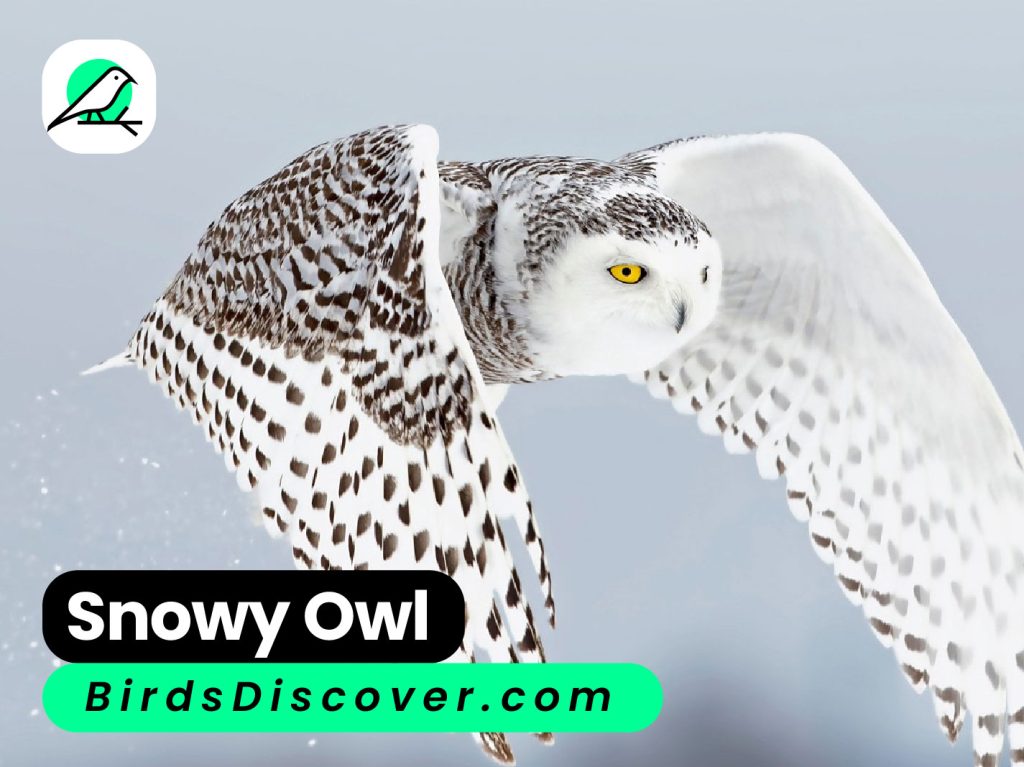
Snowy Owls are known for their striking white plumage and ability to hunt in the Arctic.
Snowy Owls are primarily found in the Arctic regions of North America, Europe, and Asia.
Size 4.2 to 4.8 feet (1.3 to 1.5 meters) and weighing between 3.5 to 6.6 pounds (1.6 to 3 kilograms).
Snowy Owl, a symbol of Arctic beauty. With its stunning white plumage and piercing gaze, this owl captures the imagination of nature enthusiasts worldwide. From the frozen landscapes of the Arctic to occasional sightings in other regions, the Snowy Owl’s presence is both captivating and mysterious. Join us as we journey into the world of the Snowy Owl, uncovering its secrets and admiring its graceful flight across snow-covered terrain.
Biography of Snowy Owl
| Aspect | Information |
|---|---|
| Species Name | Snowy Owl |
| Scientific Name | Bubo scandiacus |
| Country | Arctic regions, North America |
| Number of Eggs | 3 to 11 eggs |
| Incubation Period for Eggs | Approximately 32 days |
| Diet | Mainly lemmings, small mammals |
| Habitat | Arctic tundra, open landscapes |
| Migration (yes or no) | Partial migration |
| Body Size | Large |
| Body Weight | 2.95 to 6.6 lbs (1.34 to 3 kg) |
| Dangerous for Humans | Not generally dangerous, but can defend nest if threatened |
| Maximum Flight Height | Up to 100 feet (30 meters) |
| Weather | Well-adapted to cold climates, can withstand low temperatures |
| Birds (yes or no) | Yes |
| Total Types | One of the larger owl species |
| Total Color | Mostly white plumage with some dark markings |
6.Northern Saw-whet Owl
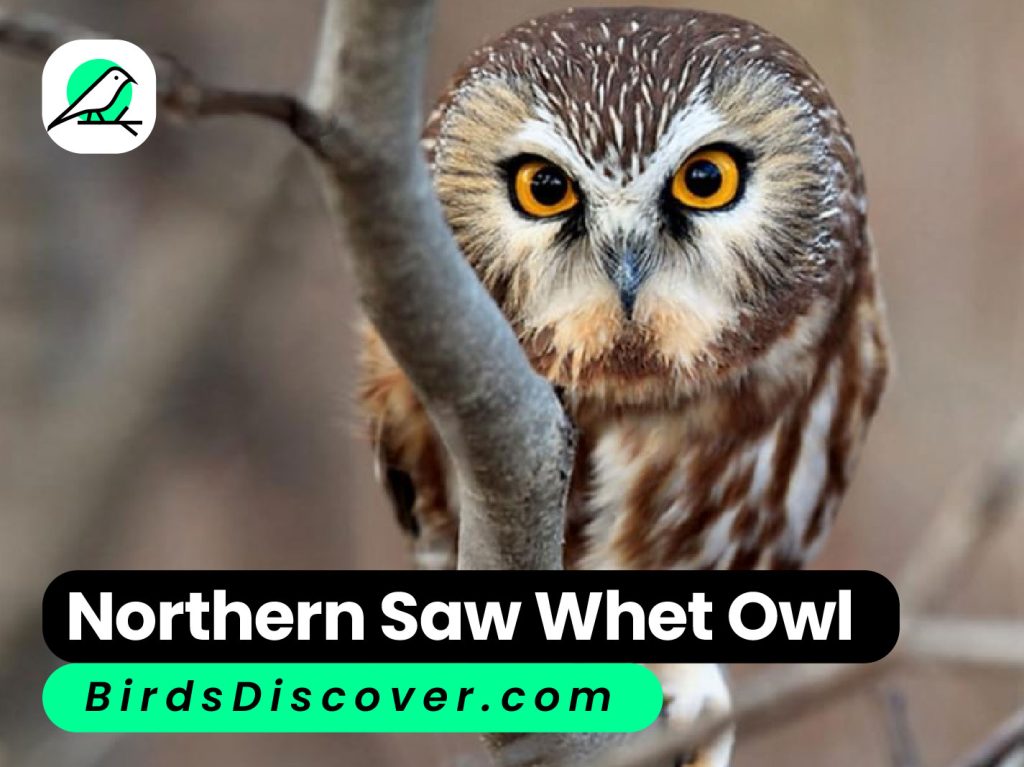
Northern Saw-whet Owl is known for its small size, distinctive call, and nocturnal habits.
Northern Saw-whet Owl is found throughout North America, from forests to wooded areas.
Size 7 to 8 inches (18 to 21 centimeters) in length, with a wingspan of around 16 to 18 inches (40 to 46 centimeters).
Northern Saw-whet Owl, a charming bird with a big personality. From its small size to its distinctive call, this owl enchants birdwatchers in forests and wooded areas. With its nocturnal habits, it hunts under the moonlit sky, feasting on insects and small rodents. Join us as we explore the world of the Northern Saw-whet Owl, uncovering its secrets hidden within the shadows of the night.
Biography of Northern Saw-whet Owl
| Aspect | Information |
|---|---|
| Species Name | Northern Saw-whet Owl |
| Scientific Name | Aegolius acadicus |
| Country | North America |
| Number of Eggs | 3 to 7 |
| Incubation Period for Eggs | Approximately 27 days |
| Diet | Mainly small mammals, birds, and insects |
| Habitat | Coniferous and mixed woodlands, forests, and wooded areas |
| Migration (yes or no) | Partial migratory; some individuals migrate, while others are resident |
| Body Size | Small |
| Body Weight | Approximately 75-110 grams |
| Dangerous for Humans | Not dangerous, but can defend themselves if threatened |
| Maximum Flight Height | Typically low to the ground, around tree height |
| Weather | Prefers cool, temperate climates; can endure cold temperatures |
| Birds (yes or no) | Yes |
| Total Types | 1 (Northern Saw-whet Owl) |
| Total Color | Brown, white, and tan |
7.Long-eared Owl
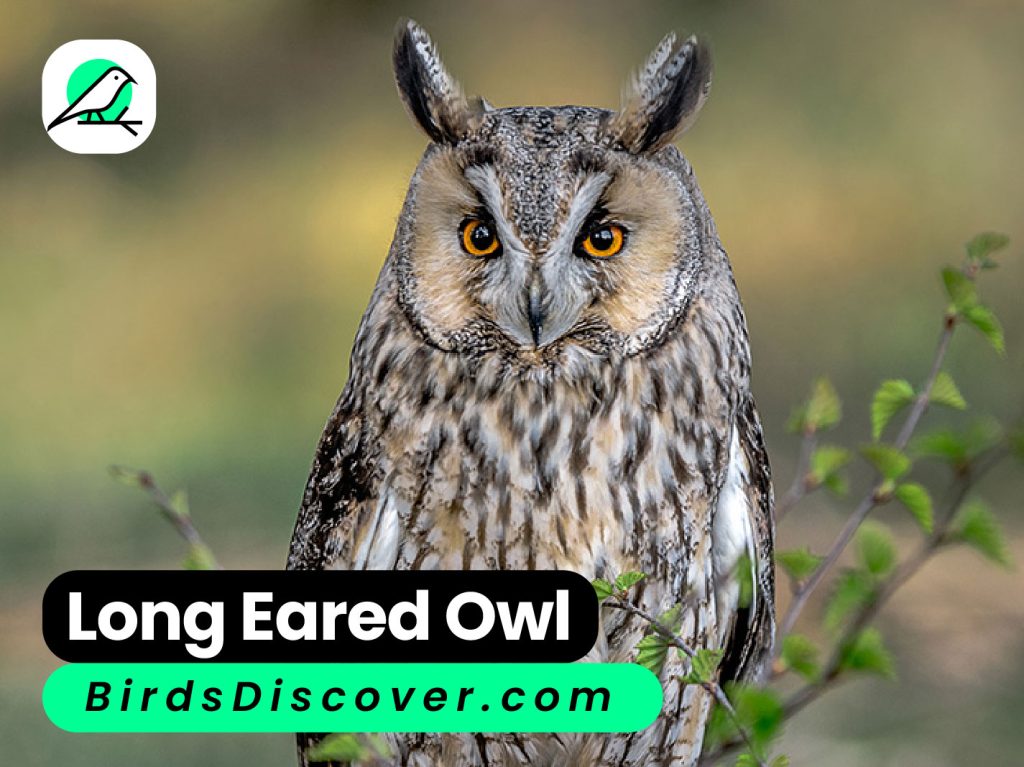
Long-eared Owl is known for its distinctive “ear” tufts and nocturnal hunting habits.
Long-eared Owls are found across much of Europe, Asia, North Africa, and North America, often in wooded habitats.
Size 13 to 16 inches (33 to 40 centimeters) and a wingspan of approximately 35 to 40 inches (89 to 102 centimeters).
Long-eared Owl, a fascinating bird with distinctive features and habits. From its scientific name Asio otus to its widespread presence across forests, woodlands, and marshes, this owl captures the imagination of bird enthusiasts worldwide. With a diet of small mammals and birds, it thrives in various weather conditions, showing its adaptability. Join us as we explore the world of the Long-eared Owl, from its nocturnal activities to its beautiful streaked brown feathers and iconic orange-toned facial disc.
Biography of Long-eared Owl
| Aspect | Information |
|---|---|
| Species Name | Long-eared Owl |
| Scientific Name | Asio otus |
| Country | Varies (cosmopolitan distribution) |
| Number of Eggs | 3-8 |
| Incubation Period for Eggs | 25-30 days |
| Diet | Small mammals, birds |
| Habitat | Forests, woodlands, marshes |
| Migration (yes or no) | Partial, some populations migrate |
| Body Size | 35-40 cm (14-16 inches) |
| Body Weight | 170-300 grams |
| Dangerous for Humans | Generally not dangerous, but may defend nest if threatened |
| Maximum Flight Height | Up to 2,000 meters (6,600 feet) |
| Weather | Nocturnal, active in various weather conditions |
| Birds (yes or no) | Yes |
| Total Types | Various subspecies exist |
| Total Color | Brown with streaks, facial disc with distinctive orange tones |
8.Short-eared Owl
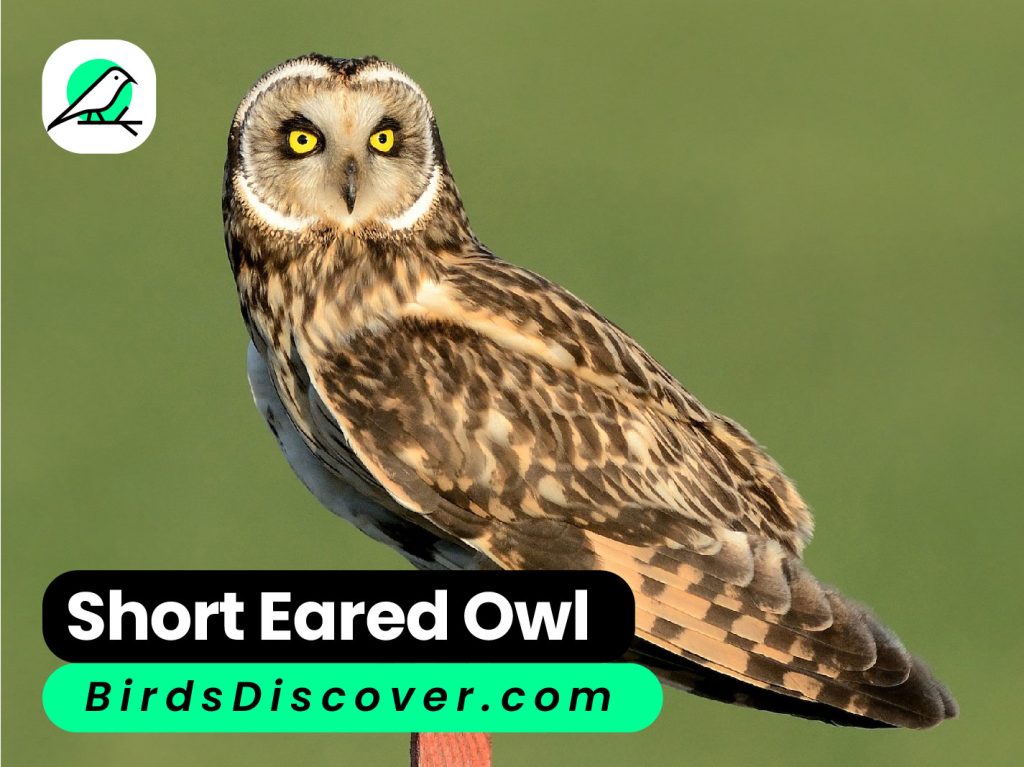
Short-eared Owl is known for its diurnal hunting behavior and distinctive facial disk.
Short-eared Owls are found on every continent except Antarctica. They inhabit open grasslands, marshes, and tundra regions worldwide.
Short-eared Owls are medium-sized owls.
Short-eared Owl, a captivating bird known for its unique traits and behaviors. From its scientific name Asio flammeus to its widespread presence in grasslands, marshes, and tundra habitats, this owl sparks curiosity among nature lovers. With a diet mainly consisting of small mammals and birds, it roams these open landscapes, showcasing its medium size and mottled brown and buff feathers. Join us as we delve into the world of the Short-eared Owl, uncovering its twilight flights and the beauty of its natural habitats.
Biography of Short-eared Owl
| Aspect | Information |
|---|---|
| Species Name | Short-eared Owl |
| Scientific Name | Asio flammeus |
| Country | Worldwide, except Antarctica |
| Number of Eggs | Typically 4 to 7 |
| Incubation Period for Eggs | About 21 to 28 days |
| Diet | Mainly small mammals, birds |
| Habitat | Grasslands, marshes, tundra |
| Migration (yes or no) | Yes, but can be sedentary |
| Body Size | Medium-sized |
| Body Weight | 206 to 475 grams |
| Dangerous for Humans | Not considered dangerous |
| Maximum Flight Height | Typically low to the ground |
| Weather | Active during twilight hours |
| Birds (yes or no) | Yes |
| Total Types | Various subspecies |
| Total Color | Mottled brown and buff |
9.Northern Hawk Owl
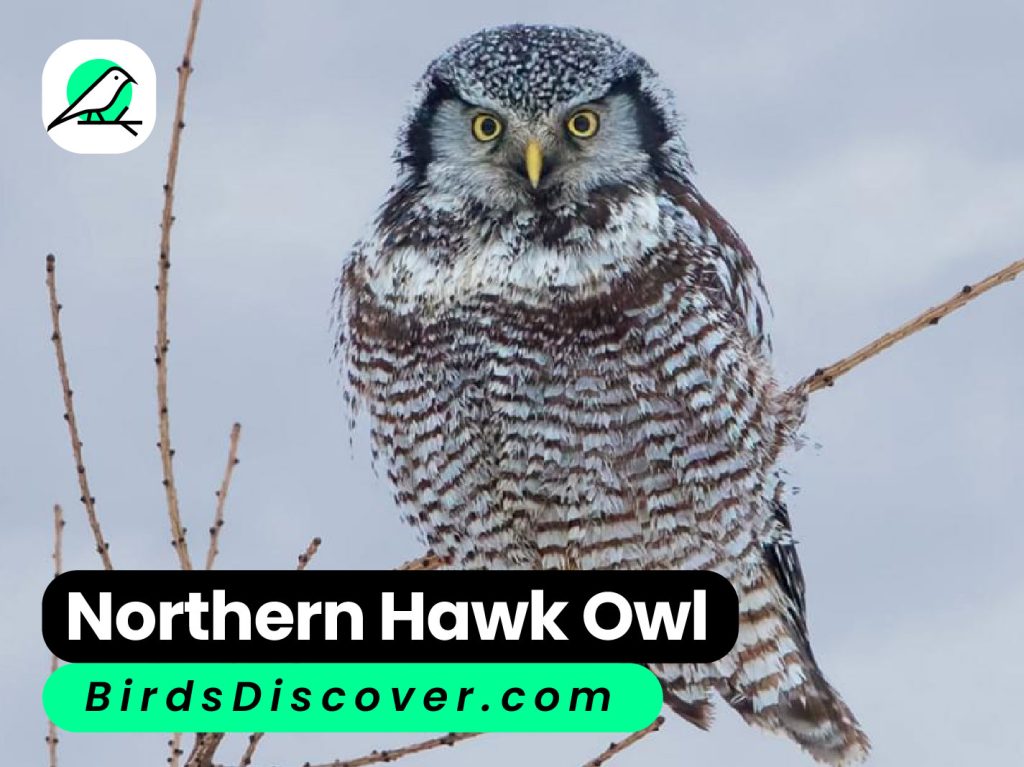
Northern Hawk Owl is known for its hawk-like appearance, diurnal hunting behavior, and exceptional vision.
Northern Hawk Owl is found in boreal forests. Northern Hemisphere, including North America, Europe, and Asia.
Size 14 to 17 inches (36 to 43 centimeters) in length with a wingspan of about 28 to 33 inches (71 to 84 centimeters).
Northern Hawk Owl, a captivating bird of prey with a striking appearance and agile hunting skills. With its piercing yellow eyes and streamlined body, this owl resembles a hawk in flight, earning its name. Found in boreal forests and open woodlands across the Northern Hemisphere, it hunts during daylight hours, showcasing its exceptional vision and aerial prowess. Join us as we explore the world of the Northern Hawk Owl, uncovering its fascinating adaptations and role as a skilled predator in its ecosystem.
Biography of Northern Hawk Owl
| Aspect | Information |
|---|---|
| Species Name | Northern Hawk Owl |
| Scientific Name | Surnia ulula |
| Country | Northern Hemisphere |
| Number of Eggs | 3-11 |
| Incubation Period for Eggs | Approximately 26-28 days |
| Diet | Small mammals, birds, and insects |
| Habitat | Coniferous and mixed forests, open woodland, tundra |
| Migration (yes or no) | Nomadic, may migrate based on prey availability |
| Body Size | Approximately 14-17 inches (35-43 cm) in length |
| Body Weight | 7-14 ounces (200-400 grams) |
| Dangerous for Humans | Generally not dangerous, but may defend nest if threatened |
| Maximum Flight Height | Typically low-level flights, rarely above treetops |
| Weather | Well-adapted to cold climates, can endure harsh winter conditions |
| Birds (yes or no) | Yes |
| Total Types | One main species |
| Total Color | Brown and white plumage, with distinctive facial disk |
10.Burrowing Owl (Rarely Seen in Wisconsin)
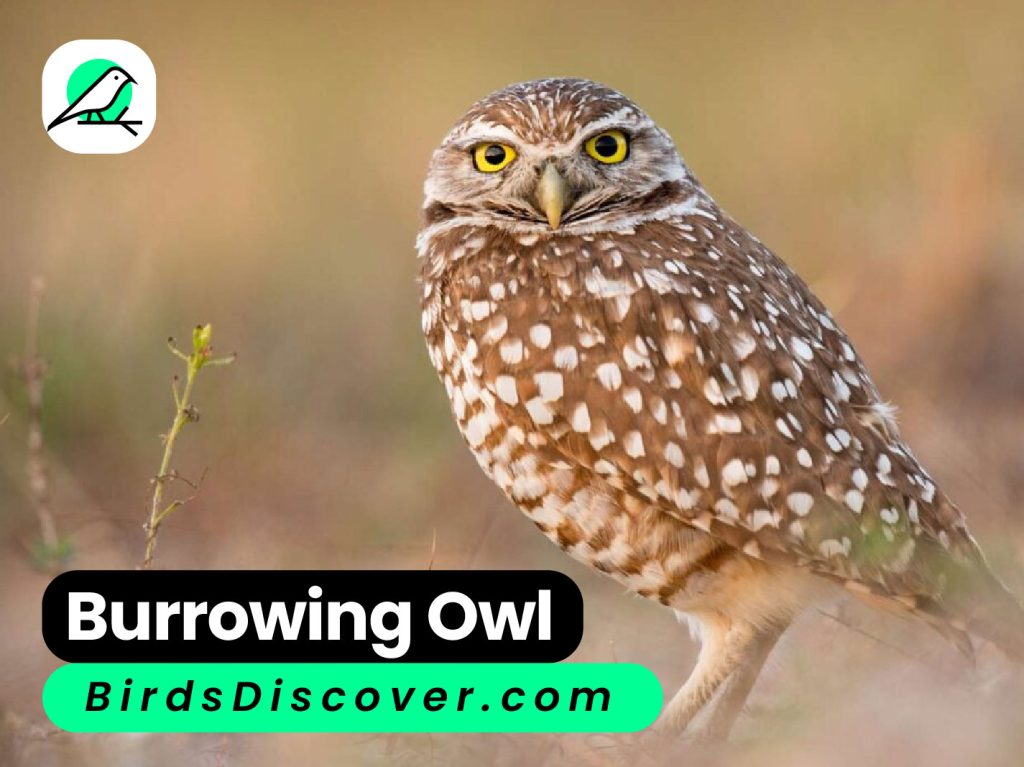
Burrowing Owl is known for its distinctive behavior of nesting underground in burrows, often repurposing those dug by other animals.
Burrowing Owls are primarily found in open grasslands, prairies, deserts, and agricultural areas across North and South America, with some populations also present in parts of the Caribbean and Central America.
Burrowing Owl, a charismatic species known for its unique lifestyle and elusive presence in Wisconsin. These small owls, often found in open grasslands and prairies, make their homes in underground burrows dug by other animals. While rare in Wisconsin, lucky observers may catch a glimpse of these fascinating birds hunting insects and small rodents during dusk and dawn. Join us as we uncover the secrets of the Burrowing Owl and its occasional appearances in the Badger State’s landscape.
Biography of Burrowing Owl
| Aspect | Information |
|---|---|
| Species Name | Burrowing Owl |
| Scientific Name | Athene cunicularia |
| Country | Varies (North and South America) |
| Number of Eggs | 6-12 eggs |
| Incubation Period for Eggs | 28-30 days |
| Diet | Mainly insects, small mammals, reptiles, and amphibians |
| Habitat | Grasslands, deserts, open areas with low vegetation |
| Migration (yes or no) | Mostly non-migratory, but some populations may migrate |
| Body Size | 7.5 to 10 inches (19 to 25 cm) |
| Body Weight | 4.5 to 9 ounces (125 to 250 grams) |
| Dangerous for Humans | Generally not dangerous, shy and non-aggressive |
| Maximum Flight Height | Typically low to the ground, up to 10 feet (3 meters) |
| Weather | Prefers warm climates, adapted to arid regions |
| Birds (yes or no) | Yes |
| Total Types | 1 (Burrowing Owl) |
| Total Color | Brown, white, and speckled markings |
FAQS
What types of owls can be found in Wisconsin?
Wisconsin is home to several owl species, including the Great Horned Owl, Barred Owl, Eastern Screech Owl, Barn Owl, and occasionally the Northern Saw-whet Owl and Long-eared Owl.
When is the best time to spot owls in Wisconsin?
Owls are most active during the night, especially during the hours around dusk and dawn. However, some species, like the Eastern Screech Owl and Great Horned Owl, may also be active during the early evening or early morning hours.
Where are the best places to find owls in Wisconsin?
Owls can be found in a variety of habitats, including forests, woodlands, marshes, and even urban areas with suitable habitat. Look for them near wooded areas with open fields nearby, where they hunt for prey like rodents and small birds.
Do owls migrate through Wisconsin?
While some owl species are migratory, others, like the Great Horned Owl and Barred Owl, are year-round residents in Wisconsin. However, species such as the Northern Saw-whet Owl and Long-eared Owl may migrate through the state during certain times of the year.
Are there any threats to owl populations in Wisconsin?
Owls face various threats, including habitat loss, collisions with vehicles, and pesticide use affecting their prey. Additionally, disturbances to nesting sites and illegal hunting can impact owl populations. Conservation efforts focus on habitat preservation, education, and reducing human-related threats to these magnificent birds.




